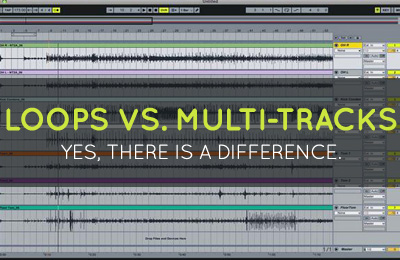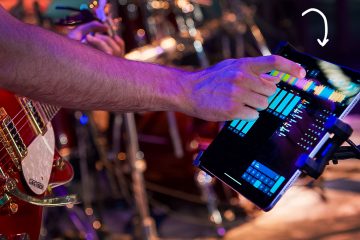Loops vs. Multi-Tracks

Using loops in worship has become increasingly popular over the past decade. More and more people are creating their own loops or implementing tracks into their live performances. Over time, the term “loop” has become a blanket title for the category of using tracks in worship – both electronic loops and multi-tracks. However, there is a difference between Loops and Multi-Tracks and I hope that this post helps clarify the distinction and use for each.
Loops
Loops are a supplement to your band, not a replacement. Loops can be individual loop elements, like a shaker or simple electronic beat that repeats over and over, or elements that can be toggled on and off spontaneously. Loops can also be full loop tracks, which follow the complete arrangement of a song and require no other action than hitting play at the beginning and following along. Loops typically have electronic, percussive or other creative elements that are meant to support your band, NOT replace an instrument. Loops can contain some of the following sounds, only to name a few: Electronic beats, shakers, tambourines, synth lead, arpeggiators, pads, electric piano sounds (delayed rhodes), filtered drum effects, electronic beeps, etc. You get the idea. The main function of loops is to help fill out your sound as your band plays along.
Multi-Tracks
Multi-tracks are individual stems (audio files) of real instruments from original recordings. If you recorded each instrument in your band this Sunday, that would be a multi-track. Usually though, they are done in the studio using real instruments or real-sounding samples. Some of the tracks included might be Drums, Bass, Electric Guitars, Piano, Acoustic Guitar, Background Vocals. These are real instrument sounds. There is some confusion as to when to use multi-tracks. Let’s say that you are missing an electric guitar player this weekend, you could simply use the multi-track electric guitar parts. Or if you’re missing a background vocalist, you could simply play along with the background vocals in the multi-track session. Multi-tracks usually follow a pre-determined song arrangement that your band plays along with. You shouldn’t use a multi-track session that includes drums and acoustic tracks if you have a real drummer and acoustic guitar player already in your band. They will clash. Multi-tracks are used as a replacement for instruments you are missing.
In Short
Loops: A supplement and addition to your band, not a replacement. Helps to fill out your sound and add creative elements.
Multi-Tracks: Used as a replacement for missing instruments in your band, or for individual recording sessions, rehearsals.
I hope this helps as you are implementing tracks into your set lists, or creating loops / multi-tracks for worship. Keep in mind the different roles for each, and that will help you in determining what instruments to include in in your loop creation or live playback session.
About the Author: Matt McCoy is a worship leader and songwriter from Chicago, IL. He is also the founder of Loop Community. Visit Matt’s Website.




0 Comments